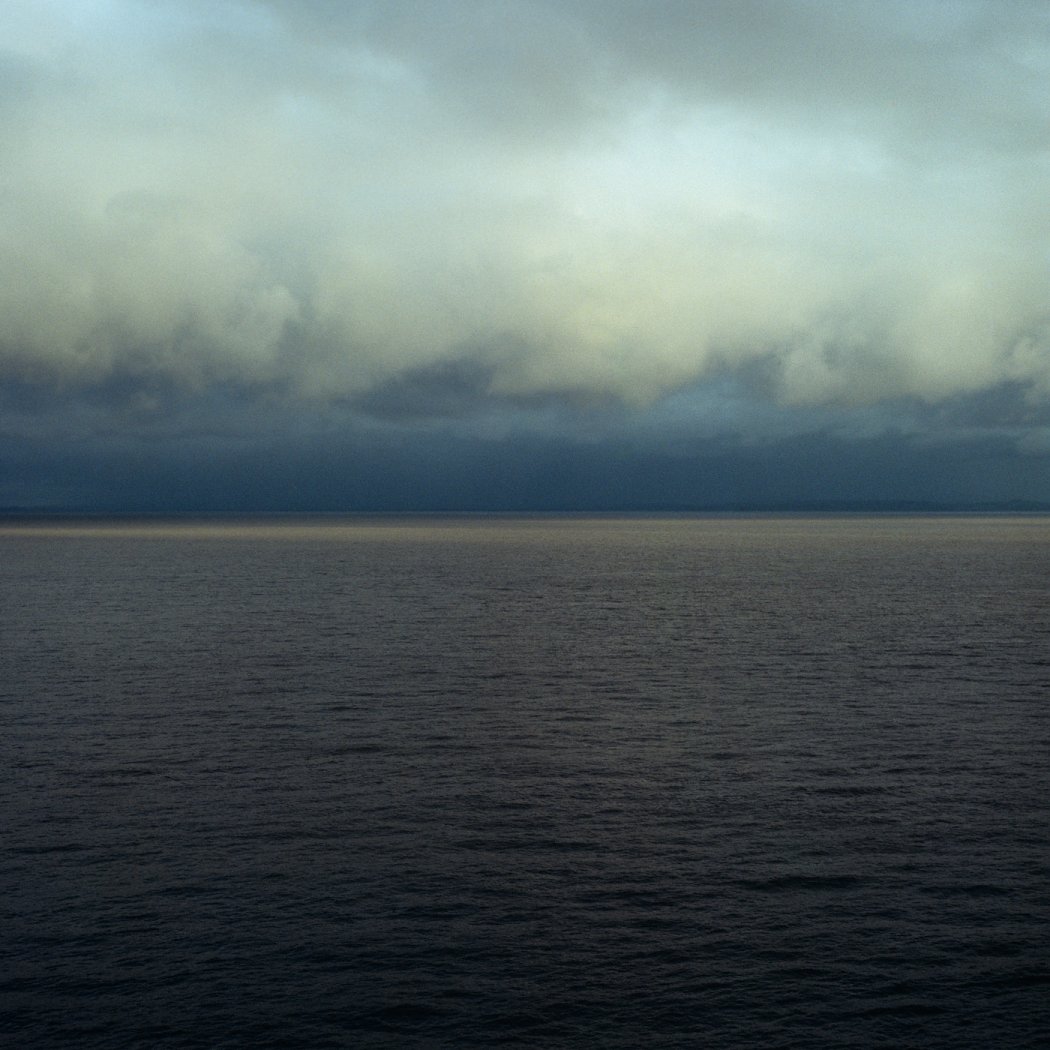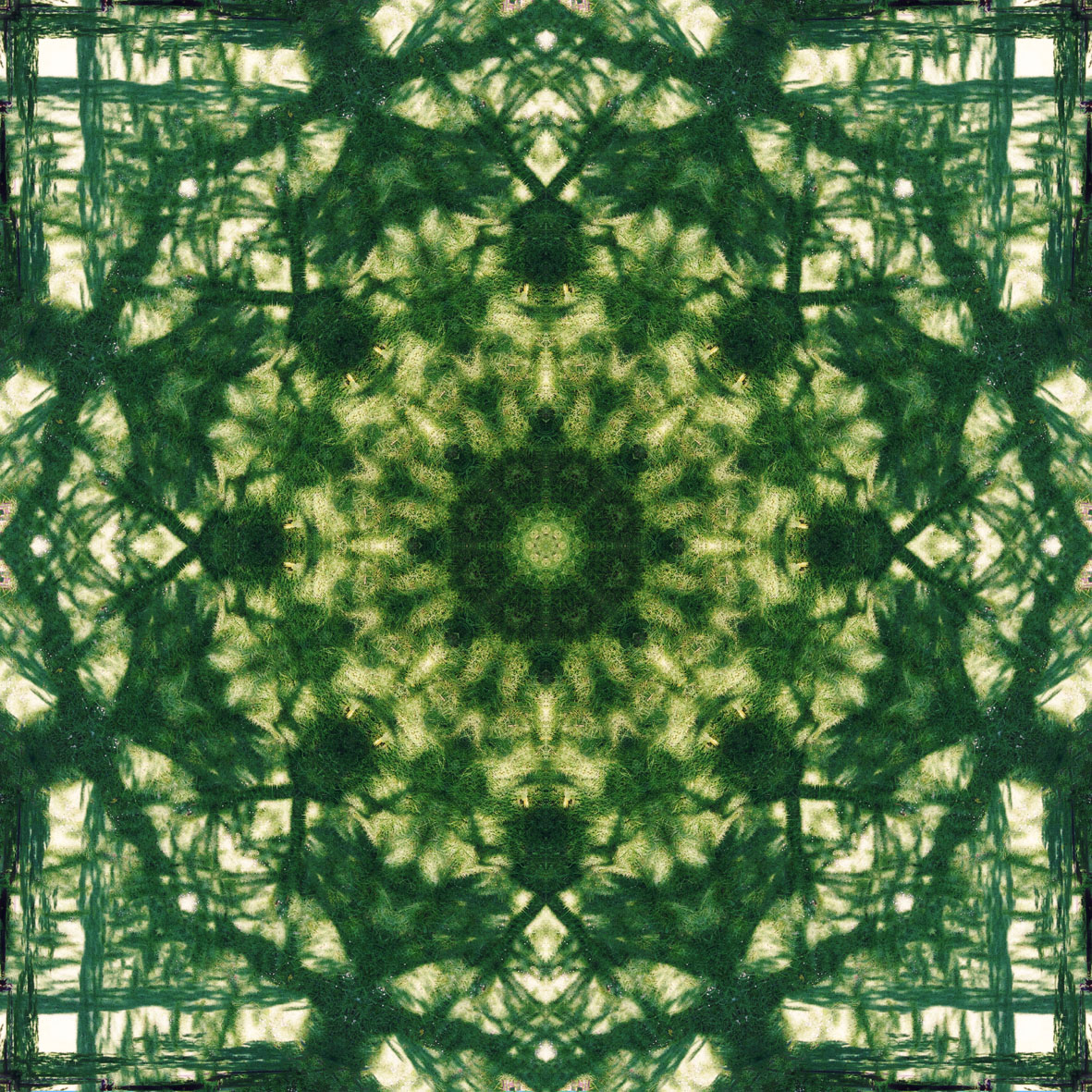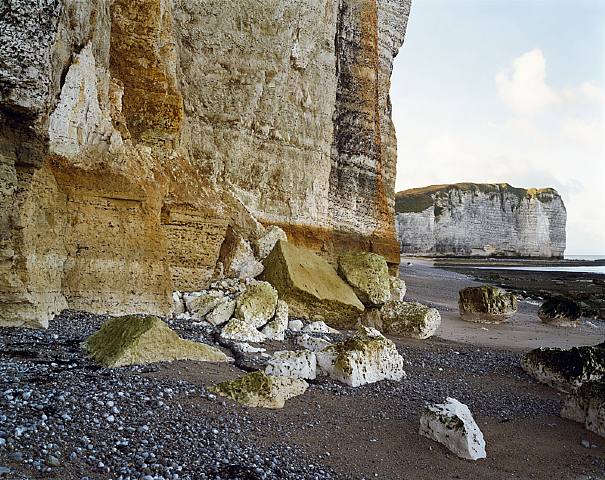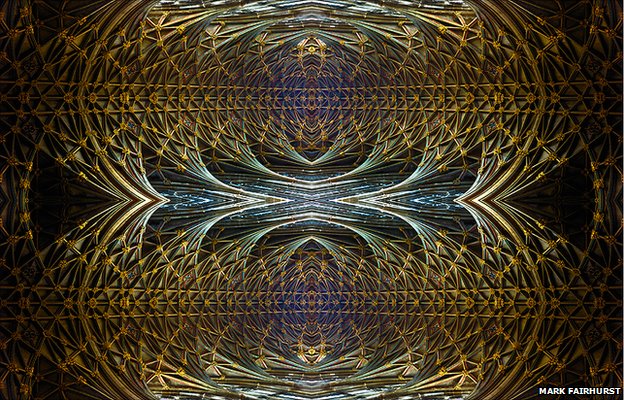Garry Fabian Miller first showed Series 1 of the Sea Horizon series in 1977, and 2 years later, at the Arnolfini in Bristol. These 40 photographs were then published in 1997, and exhibited again at the Arnolfini (also in London), which is where I first saw them, aged 16. My visual diary entry that day:
27th April. Down at the Arnolfini. Blue gets me every time. There were about 20 1ft square of these photos round the walls of one room. This idea of looking at the same thing in different lights is like Monet. I would have got the catalogue – only it was £75. There is a serene consistency in a set like these. They’re wonderful.
16 years later, another set (Series 2) of the same sequence has been printed for exhibition, which I caught just before it closed at the Ingleby Gallery in Edinburgh. For me, the conjunction of my birth year and place, at the cusp of higher education into Fine Art, and now as a practising photographer and researcher, marks Fabian Miller’s work with my own interests in a particularly personal way. Not to mention the repetitive looking at the Severn Estuary, and the later inspiration from Dartmoor. I struggle to write thoughts about his work without being spiritually reflective, preferring something more poetic than descriptive – a foreword from Fabian Miller’s early book quotes Hilaire Belloc on the sea as “the common sacrament of this world”. So at this show, on a hot summer’s day and in an empty gallery, I wrote the following:
The wavering edge of perception and cognition. A thin line or a seam between an up and a down that are held together in some sort of suspension. The down has the most mass or gravity when you can see the frill of the waves, the implacability of a sea surface and a slight perspective shift when you sense your space above it. But it has the least when it’s merely a graded shade of darker plane, either colour-blocked and solidified or a sliding angle inward. None of this edge feels outward to me, maybe it’s the scale (40cm), maybe it’s the square shape – both a tendency to abstraction contained. The clouds and the light are mostly an upwards activity, a shifting screen of billow or streak, sun or rain, pregnant cloud or dissipating veil of haze. Metal grey, azure blue, Monet pink, ricocheted sunset light in gleam or gloom – it’s like a phantasmagoria where you don’t hold the transitions, rather they hold you.
Header image: No. 5, The Sea Horizon (Series 2), 1976, by Garry Fabian Miller. Used with permission.



